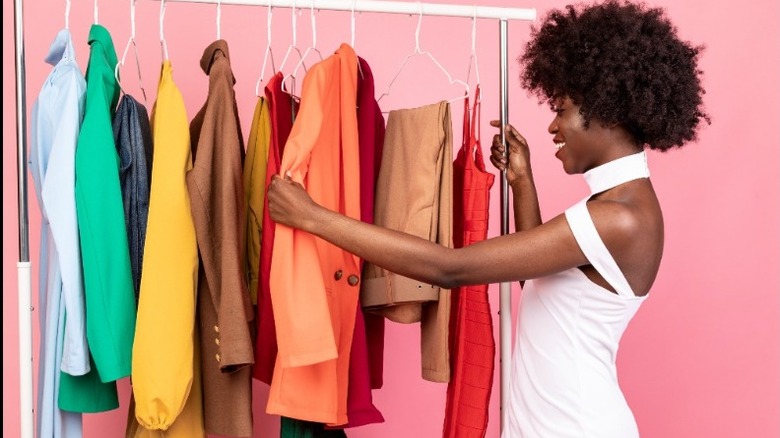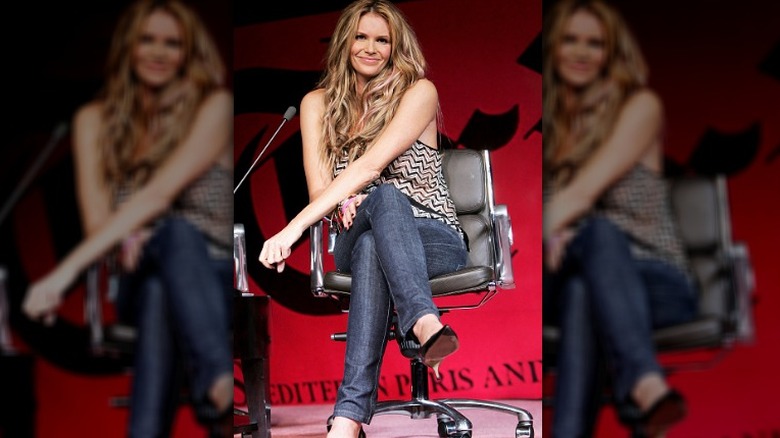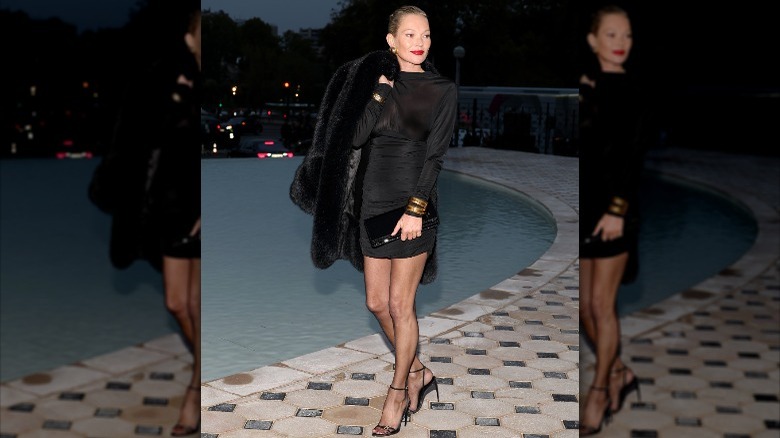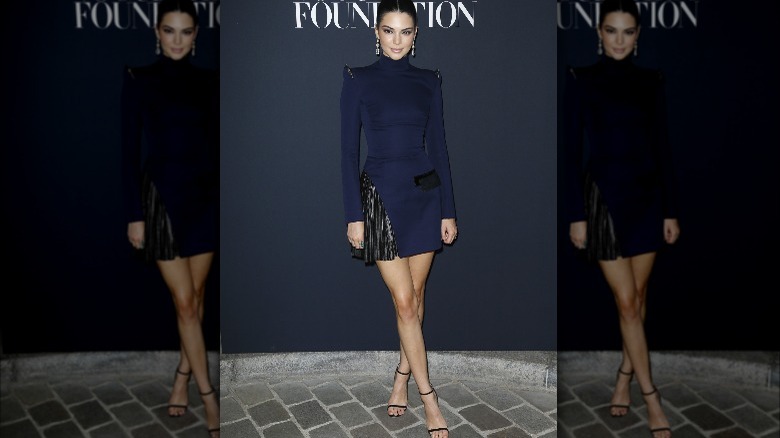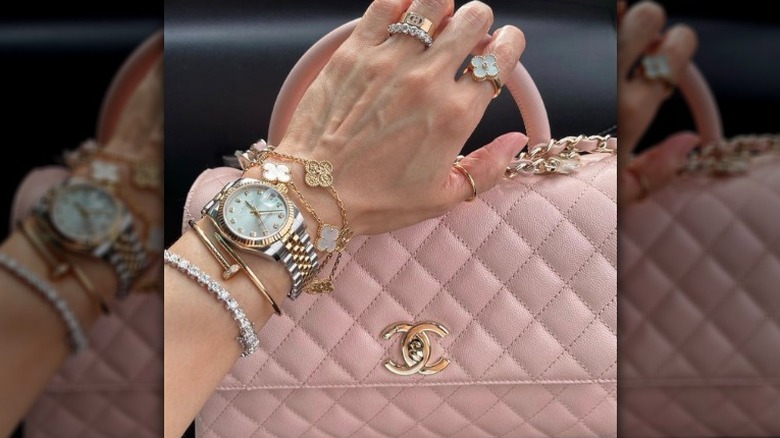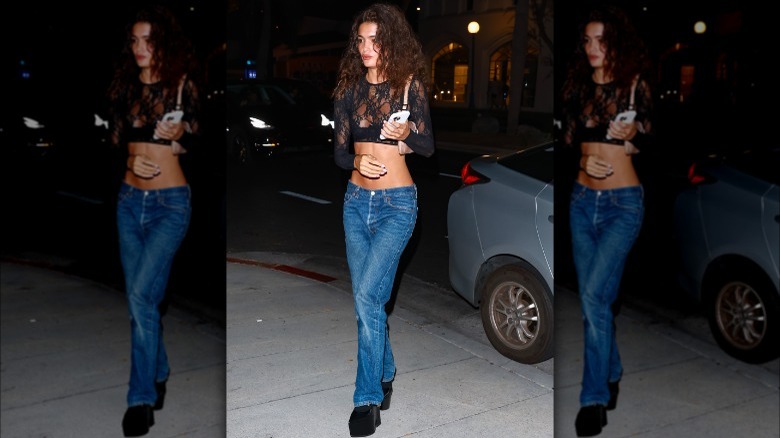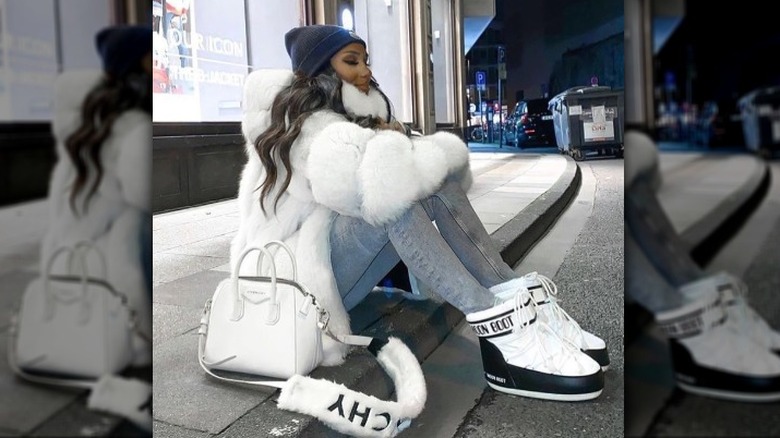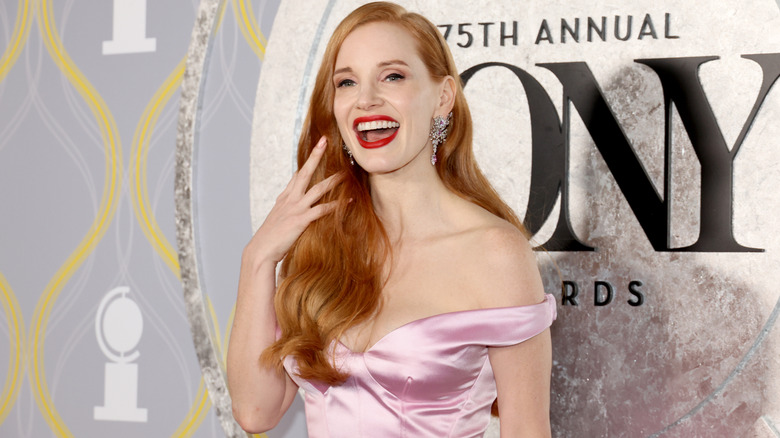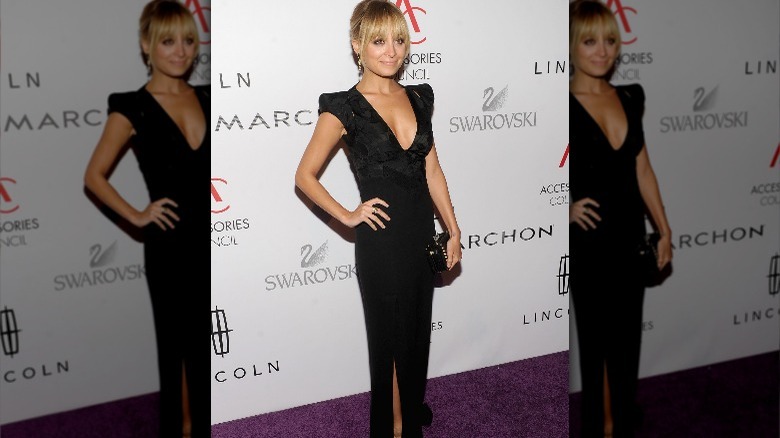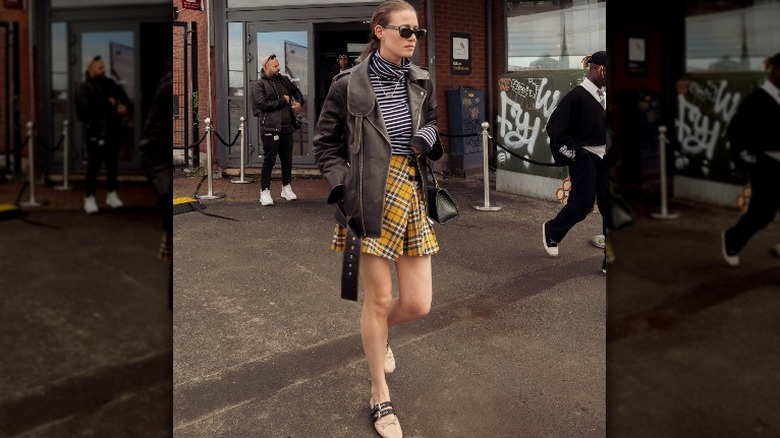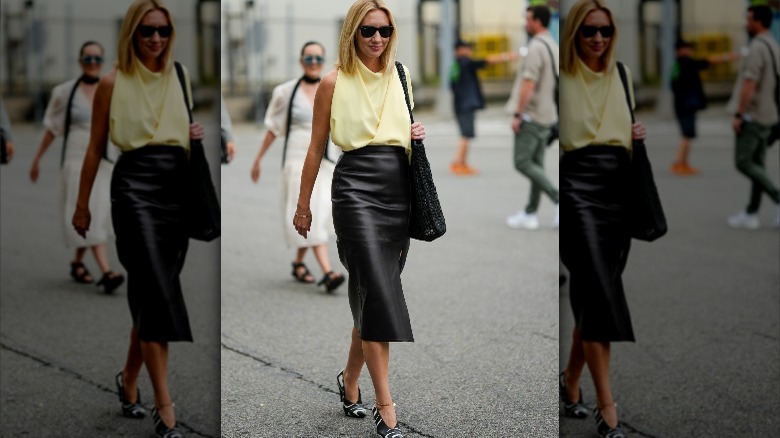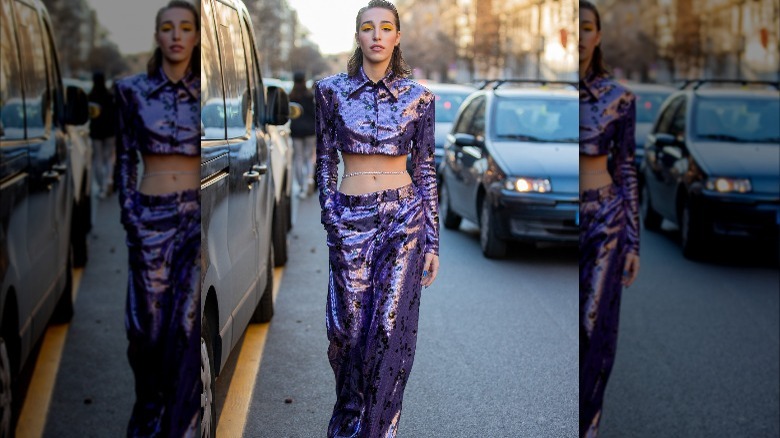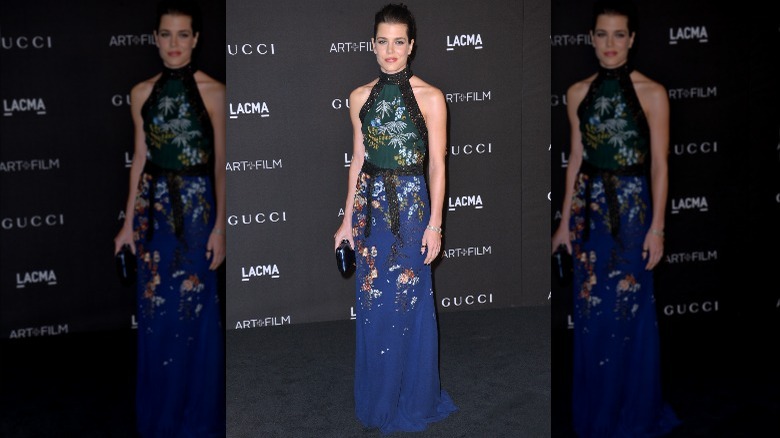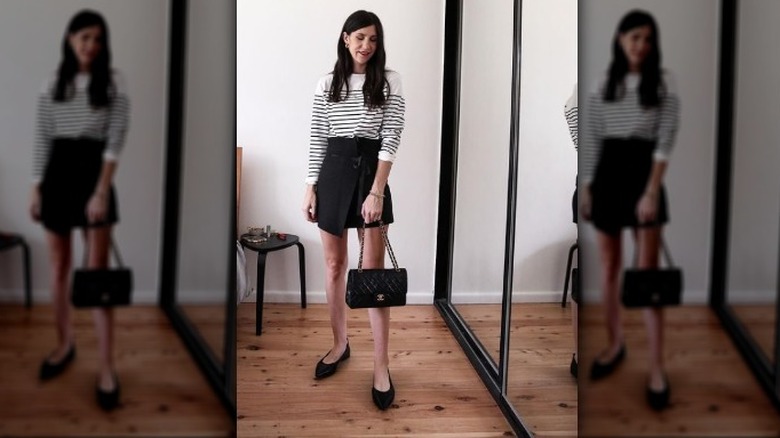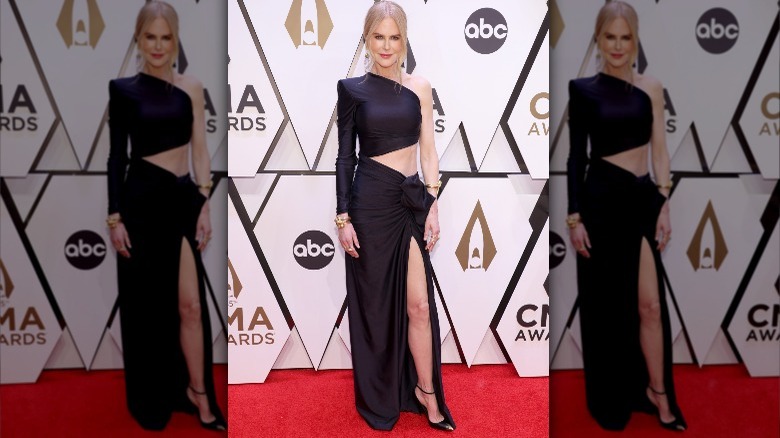14 Fashion Rules That Are Made To Be Broken
Fashion rules are useful, as they help us avoid style faux pas, and it's always good to have some guidelines and work your creativity around them, especially if you're not a fashion professional. As Professor Andrew Groves, head of the University of Westminster's Fashion Department, told the BBC, "We all like to think we're individuals but rules give people a certain security when it comes to fashion."
Many directives actually make sense and have stood the test of time, like dressing up for operas or musicals — it's an excuse to wear something special. But aside from military uniforms and other circumstances with equally unmovable dress standards, etiquette, and traditions, few fashion rules are set in stone. They might have a bit of truth in them, but don't take them too seriously. Some of the most well-known style dos and don'ts are outdated, as both fashion and dress codes are continuously evolving. Others are too rigid and don't take context into consideration or simply overlook factors like personality, culture, and lifestyle. In most cases, proper styling can make the unexpected work beautifully for the person wearing it.
Common sense, knowledge, and power of observation are key to determining what is appropriate — and flattering — or not. Observing the work of stylists who break rules in a fashionable manner is usually the safest option. As such, we've debunked some fashion myths to help you free your style from outdated restrictions with confidence.
No long hair or jeans on women over 40
A few years back, fashion designer Carolina Herrera sparked controversy and received a lot of online backlash when she advised against women over 40 wearing "jeans, long hair, or bikinis," among other very personal views on classic elegance. "Nothing ages a woman more than pretending she is still young," she told the Daily Mail.
However, according to fashion and beauty specialists, wearing long hair or jeans after a given age has more to do with the way you look, your personality, and your personal style than with the number in your driver's license. And, of course, how you wear them makes a big difference. Some women never looked good in short hair at any age and in some people, a long, well-kept mane can actually add youth to one's look. You can wear your hair any length at any age. "It's all about the way your hairstyle makes you feel ... I am seeing way more women choosing to keep length in their hair now as they age," hairstylist Kirby Lago tells Beauty Heaven. "A prime example of this is the stunning Elle Macpherson; her hair does wonders for maintaining her youthful glow." As for jeans — another favorite of Macpherson — they are game as long as you go with a flattering pair that suits you.
No short skirts after a certain age
Opinions on short skirts and age vary a lot, even within the fashion industry, but most style advisors seem to agree that many women look amazing in miniskirts regardless of age. With the miniskirt being mostly associated with youth and innocence, it takes a certain profile to pull it off. As long as it's a flattering skirt, you're probably good, especially if you wore minis your whole life and know how to make them work for you.
The short skirt only seems to be really frowned upon when it makes a harsh contrast with one's beauty type. Then again, not all minis are created equal. Choosing the most flattering length and eventually making styling adjustments can be a good idea to wear them tastefully and with style. Celebrities like Kate Moss and Gwyneth Paltrow are great inspirations when it comes to wearing a mini — no one would dare say they don't look appropriate or fabulous.
Black with brown or blue is a huge no-no
While the common saying "black and blue will never do" has gained urban-myth status in the fashion world — and the same is often said about black and brown — most stylists agree that dark colors go well together, especially neutrals like black and blue. According to Today, a neutral palette of clothing coordinates well with almost anything, so you can never go wrong when adding these shades to your wardrobe. As Thread stylist Millie Rich explained to the outlet, "Dark shades naturally work well together, so there's no danger of clashing, and the combination of blue and black looks particularly sophisticated."
The only actual requirement is to make sure you choose tones that are contrasting enough. It has to be clear that you're wearing two different colors instead of alternate shades of black. Therefore, as long as you shy away from any deep navy or brown that passes as faded black, you're safe.
Don't mix silver and gold
When Chanel launched the Gabrielle bag back in 2017, one of the details that thrilled fans the most was the combination of gold and silver chains and hardware. Gone was the client's anguish when choosing one of the brand's luxury bags: gold or silver? Gabrielle simply had the best of both worlds, which made it oh-so easy to wear with anything in one's wardrobe. Now if Karl Lagerfeld, a fashion designer who was cautious about stepping into "tacky" territory, gave mixed metals his blessing, we can only assume that the fashion myth doesn't hold up. Sure, as with any rule, it has a reason to exist. It's easier to get it right if you're only wearing metallics that match. However, when done correctly, the effect of combining different ones is stunning.
Jewelry specialists Silverbene have a few fool-proof tips to mix tones that can be applied when styling clothing, jewelry, and accessories — mix silver and gold when wearing a solid-colored outfit, as printed fabrics already have enough information going on. Layer different toned pieces to blend them, and if possible, have at least one accessory that has both hues. To wear gold and silver, you can opt for a piece featuring both precious metals. This will blend them together seamlessly with your outfit.
Your bag must exactly match your shoes and/or belt
Although that classic style guideline isn't exactly wrong, there are other factors that are just as important. A very casual bag will probably work against classic or party shoes, even if they're both the same color. Therefore, bags, belts, and shoes don't have to match exactly — which can seem a bit stiff and outdated — but they have to relate and make sense together somehow.
According to Thread, a harmonious — or otherwise beautifully contrasting — narrative can be achieved by combining similar tones or different hues in the same palette instead of matching. While pairing neutral shoes with a brown bag or blush sandals with a fuchsia bag is acceptable, you can intentionally clash bold prints, textures, tones, or even mix opposite aesthetics for a cool look — think punk boots with a dainty dress. Or, you can keep your focus on one item only, like neutral shoes, a belt, and an extravagant statement bag.
Don't wear white in certain times of the year
The "no white after Labor Day” rule is still making people in the U.S. think twice about wearing white past fall, and the fashion conscious in some European countries would also advise against it. On both sides of the Atlantic, well-to-do people have often had a lighter-colored wardrobe for summer, and for them, it made no sense to take it into winter, as white is less cozy and easier to catch mud, dirt, or snow stains. But regardless of its class implications, this rule is outdated. As fashion and pastimes evolved, and long-distance travel and snow sports became fashionable, wearing white eventually became chic for the elites — think designer white ski suits and fur coats.
Therefore, this is a myth that stands for practicality alone. If you can pull white off in a warm way and are able to keep it immaculate despite the weather, wearing it is up to you and how you style it.
Pink looks awful on people with red hair
If you're a ginger, you probably grew up hearing this myth like Anne of Green Gables — red hair and pink clash. But you can pick colors to accentuate your stunning tresses without taking away from the power of being a redhead alone.
Moreover, the truth is that forbidden colors aren't really a thing, as each one has a range of shades. There are many hues of pink, and almost as many variations of red hair. There are different levels of strawberry blond, orange, copper, bright red, and deep auburn, not to mention that skin tone and eye color play a role when picking flattering tones, too. Somewhere along the spectrum of cool, warm, deep, soft, light, and dark pinks, there has to be one to suit you perfectly. For inspiration, you can look to Jessica Chastain, Florence Welch, Julianne Moore, and Emma Stone, among other redhead celebrities who often wear different shades of pink with gorgeous results.
Avoid long skirts if you're petite
This fashion rule is food for thought. Depending on your body type, you can be petite and look long and lean, or actually be tall and appear shorter in pictures. Furthermore, skirts of any length can make you look petite or elongated depending on how you style them. However, if your goal is to make sure that you absolutely appear longer and leaner, don't avoid lengthy skirts. They can actually help give you height, as proven by shorter fashion-savvy celebrities like Nicole Richie and the Olsen twins. But do follow some tried-and-true style tips to make them work for you.
Choose high-rise skirts that give the appearance of lengthened legs, and stick to solid colors or small prints — in maxi dresses — that create a taller effect. Make sure that the hem is fitted to hit around your heel instead of dragging, and try slightly fitted styles, possibly with a slit. One example of a flattering maxi skirt is Givenchy's SS22 long back-slit skirt, a minimalistic design reminiscent of the '90s that looks great on everyone.
Never mix patterns
Although it's easier to get an outfit right when you're working with fewer mixed prints, if styled correctly, you can make an otherwise bland outfit more interesting. Playing with different patterns is also a way to maximize everything you own. Imagine how many more outfits you can create with a single tweed skirt if you pair it with your printed tops instead of sticking to solid shirts and tops only. However, in order to break this rule in a stylish manner, there are guidelines to bear in mind.
Fashion designer Emily Westenberger shares that combining several prints is too risky, so stick to two, preferably within the same tones. Furthermore, play with proportions or accents, mixing a smaller one with a bolder variation or using a simpler pattern in a more vibrant color to highlight a contrasting design. According to the fashion pro, prints like polka dots, plaids, and animal prints are classics that can be worn year after year, with some of them — such as stripes — even acting as neutrals. "They compliment so many other prints. They tend to be less overwhelming and simpler. They balance prints out," she explains on her website.
Leather is not for summer
Although leather isn't the first material to come to mind when one thinks of summer fabrics, you don't have to hide all your beloved leather pieces in the back of your closet as soon as days start getting warmer. Leather garments, if chosen and styled correctly, can be worn as statement pieces with stunning results.
A lightweight pencil skirt in vegan leather with a simple top makes an effortless and stylish outfit for a warmer night out, while a thin, suede miniskirt with a T-shirt or button-down is perfect for warmer days. Not to mention that lightweight leather jackets, or waistcoats, can be worn year-round and are excellent for breezier summer nights. As celebrity costume designer and stylist Tiffany Hasbourne tells Insider, "If [that fashion rule] was the truth, then why do they make leather shorts, leather bustiers, and cropped leather jackets?"
Shiny materials are for evenings only
Knowing which fabrics are more appropriate for each time of the day, the weather, or occasion is useful to help you get your outfits right most of the time. However, as fashion references and habits have evolved, strict guidelines rooted in pre-WWI dress codes became pointers to consider rather than actual rules to be enforced on a daily basis. Therefore, nowadays, most people are not bound to "Downton Abbey"-like norms when it comes to materials and textures and are allowed to have a little fun playing with fabrics.
A bit of sparkle during daytime is allowed, especially if you bear in mind two specific style tricks. Either choose pieces that are traditionally associated with a muted kind of sparkle, such as a hippie silk dress with bejeweled embroidery, or a knitted sweater with metallic accents. You can also style your outfit in a way that tones down the sequins, glitter, or embellishments, making that shiny statement piece look more informal. As Olivia Lidbury, fashion editor for John Lewis, highlights, "The knack with donning your sequins in the day lies in mixing the high with the low, so offset the fun and frivolity of sparkles (the high) with something tailored or sombre (the low)." And, of course, we can't forget leather in a gold or silver hue, as metallics are always appropriate for daytime wear.
Elegant ladies never wear...
Recently, with the old money trend running wild on social media, many tutorials on how to appear effortlessly preppy, classy, and elegant have begun popping up. However, as much as a return to timeless elegance is refreshing and welcome, most of these guides should be taken with a grain of salt unless you want to look like you're trying too hard.
Among those are tutorials that forbid a specific type of bag, a certain type of dress, or an entire brand, swearing that they're not elegant. While there might be some truth to some of those tips, we must consider the sources first and foremost. After all, if even socialite and designer Carolina Herrera can't be followed blindly, imagine aspiring content creators who often have little experience in the circles they're talking about. And although trendsetters from traditional families might share some common traits when it comes to fashion, the truth is that they're individuals, not clones, and there's diversity of style among them. Ultimately, it's best to stick to advice from proven fashion professionals with the right connections and a flawless style, and to keep an eye on publications that have reported on trends and tips for ages.
Horizontal stripes make you look bigger
Although there might be some truth to the stripes myth — and let's be clear that there's nothing wrong with looking "bigger" — that doesn't mean you have to give up your coveted Breton stripes altogether if appearing slimmer is your goal. Even horizontal ones, when chosen right, can look beautiful on curves — namely, by enhancing the bust.
Stylist Imogen Lamport recommends narrow lines to make horizontal stripes work for you: "Narrow horizontals act as ladders and draw the eye up to the face and can be slimming and lengthening. This is because the narrower lines are difficult to focus on so we don't follow the line horizontally, but instead start looking for more in a vertical manner." She adds, "This pattern is particularly flattering when worn underneath an open jacket ... where the horizontal lines appear even narrower and become very slimming ..." And, of course, you can add other slimming tricks to your outfit, like wearing a top with lines that go across it with high-waisted bottoms in a dark color.
Tall women should avoid heels
While tall women are blessed not to need heels, that doesn't mean that they can't wear them. After all, pumps aren't just about adding height — they give the legs a beautiful shape and are more appropriate for some dress codes. With so many options out there, all a tall girl needs to do is to enjoy all the styles, especially those that are usually tricky for other women, like kitten heels, and to balance the overall look instead of worrying about their footwear. In order to accomplish this, apply some smart styling to look delicate rather than magnificent if that's not the look you're going for. According to The Tall Girl's Guide to Fashion, stay away from shoes that elongate your figure, such as monochromatic looks. Instead, go for bold prints and contrasting colors, wearing anything that creates horizontal line breaks, such as mid-lengths and longer jackets.
Most of all, however, tall ladies can style their heels with confidence. As MigrationsPipeline writes on HelloGiggles, "Whether I have my heels on or not, I never give an inch to people who ask me to shrink."
